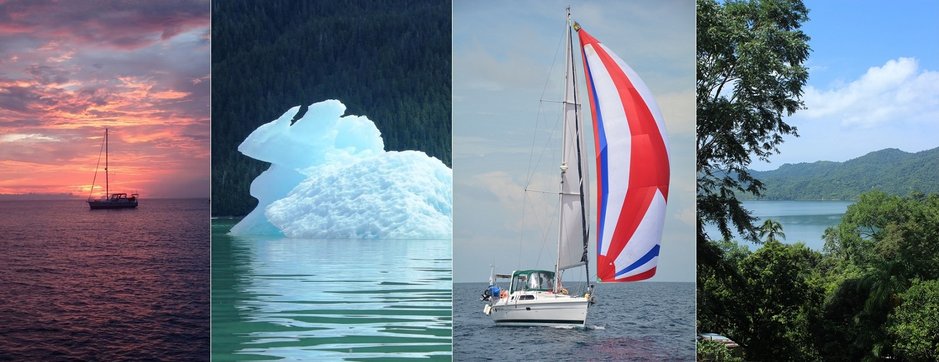After a great breakfast at the B&B, we headed off to see the Kimberly Mine. The tour starts off with a train ride up to the mine operation the same way the miners got there years ago. Though their trains weren’t painted bright red:
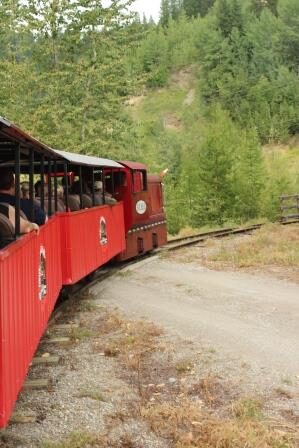
This is Bill Roberts our tour guide. He was a miner his whole life and has now written a book, The Best Miners In The World, a collection of miner stories he recorded over a 20 year period (yes, we bought a copy!). He was quite the character. He started off by telling the parents that he had no plans to compete with crying kids. So if their kids got out of control, they should remove them to a room where they had Legos and coloring books. And if they didn’t he and everyone else would question their parenting skills. Later when he asked if there were any questions he would be happy to answer them or make something up because none of us would know the difference anyway.
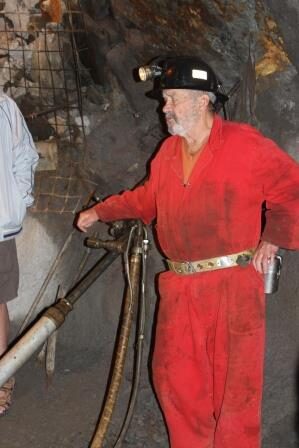
Bill is among a number of retired mining personnel that maintain the park. One mining executive who once had 8000 mining engineers working all over the world now drives the train because its fun.
Bill explained how they would use explosives to mine the rock. They would drill three large holes in the middle, surrounded by a number of smaller holes. The smaller holes were filled with explosives. They were then set to blow in sequence starting with the ones closest to the big holes, and then spiraling outward. This way the rock would collapse starting with the hole in the middle and making successively bigger holes with each explosion.
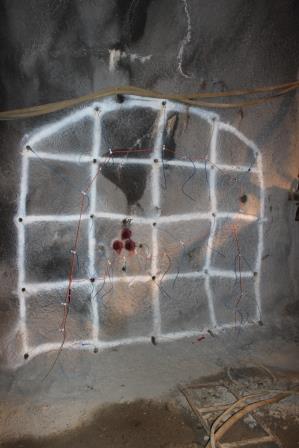
In the early days each miner carried a canary into the mine with him as an early warning system for methane gas. If the canary died, they ran for it. Later they used these specially made lamps. The top part would allow the air into the lamp, and if there was methane, the lamp would make a small explosion inside, but be contained within the lamp. Similarly if there was little oxygen present the lamp would go out.
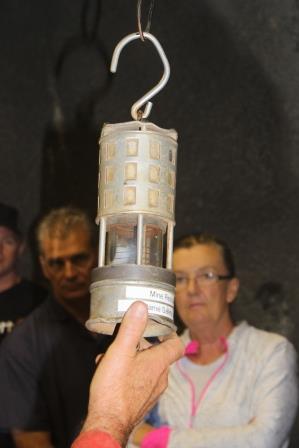
These are the air packs that rescue miners wore. They had enough air for 2 hours and rescue workers would cycle in and out of an area they were trying to dig people out of.
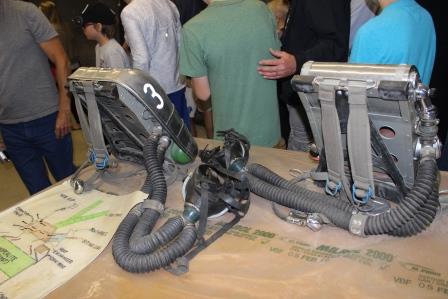
Bill then demonstrated some of the equipment used to scoop up the loose rock and put it into carts to be hauled out on the train tracks. They primarily mined silver, tin, lead, and zinc. Over its lifetime the mine put out $60 Billion (in today’s dollars) worth of ore.
We then moved out of the mine and into the generator plant. They used water from a dam up on the mountain to drive an air compressor system that ran all the mining equipment. The giant cables looping around the wheels are made of industrial hemp.
They’ve done a great job of preserving the history of this place.

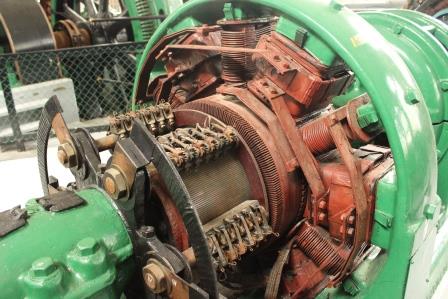
Dad couldn’t resist some clowning around:
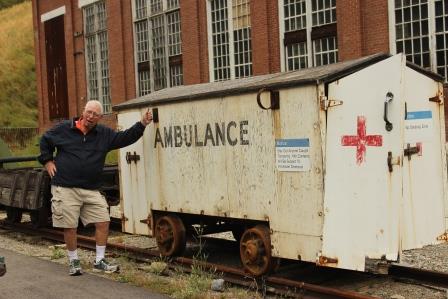
Then it was back to the interpretive center to see a bit about how the miners lived. This was the one room school house where there were about 16 kids in attendance:
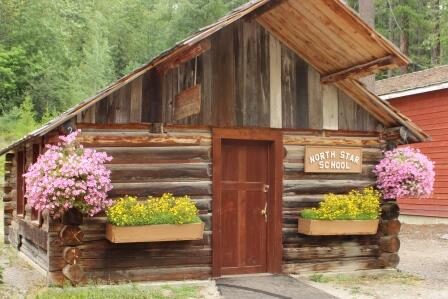
And up on the mountain, the miners lived in these tents.
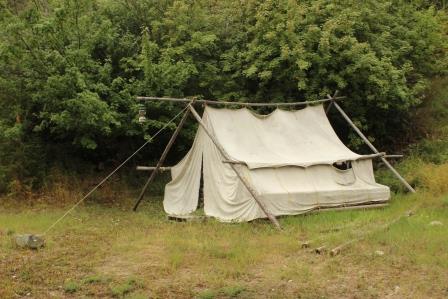
For those with houses back in town, they might have looked something like this:
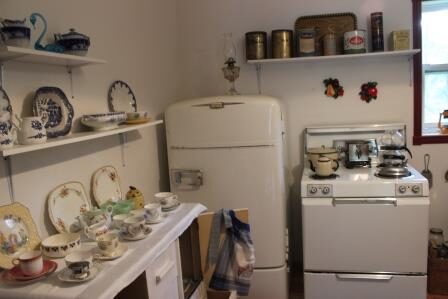
Then it was back in the car to head for Banff. We drove through the Canadian Rockies to find that much of the landscape had been badly burned this year. In one area alone, 250,000 acres burned. Dave said that the mountains looked like porcupines with all the dead trunks sticking up in the air. Here's a shot of what it looked like when the fires were burning. Yikes!

Our plan was to stay at a hotel in Canmore - 10 minutes outside Banff - because the hotels are $100 a night less than Banff. We had heard that the scenery was just as spectacular. After hanging out on the hotel deck with a glass of wine, we can attest to the truth of this:

